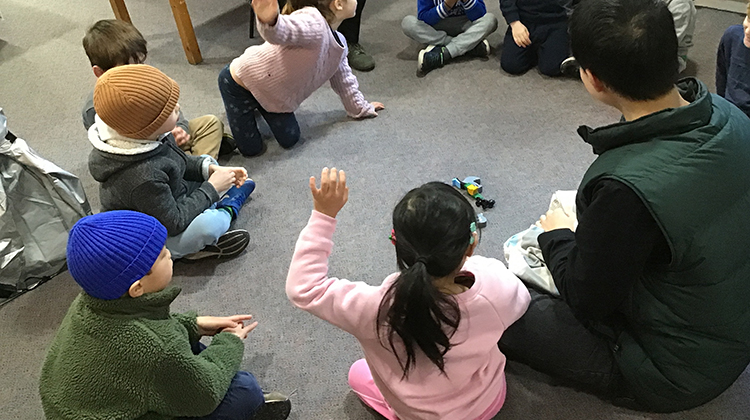Negative Reinforcements Don't Equal Punishment

I remember a discussion that happened years ago when a parent asked me about my classroom management strategies in relations to behaviour guidance. I discussed the complementing roles and effectiveness of positive and negative reinforcements in helping a healthy and positive dynamic in a classroom.
The parent asked me:
“So Darren, you’re punishing the children then when you’re saying negative reinforcements?”
The answer is: No.
Negative reinforcements are not punishments. Punishments are another set of classroom management strategies that are least encouraged by research (Zirpoli, 2012; Kaplan et al., 2017).
Johnson (n.d.) explains that negative reinforcement and positive reinforcement are actually behavioural and psychology based scientific terms that now are being used in daily conversations. When you say the words “negative reinforcement”, it is often misconceptualised as punishing learners, when in fact this is inaccurate.
What is Reinforcement?
Reinforcement means when a learner produces a behaviour that aligns with the socially or classroom accepted behaviour. The agreeable result conditions and motivates learners to repeat the same behaviour, because it is agreeable and encouraged (Zirpoli, 2012).
Reinforcement always produces a result that is agreeable to the subject.
Now, What is Positive and Negative Reinforcement?
To us, the term positive usually means something good, and the term negative usually means something bad.
But, in science and psychology, positive means that something is added, and negative means that something is taken away (Kaplan et al., 2017; Zirpoli, 2012).
So, let's put the two terms together. Reinforcement is when something agreeable happens. Negative is when something is taken away.
Therefore, negative reinforcement is when a person's behaviour causes something to be taken away, which produces an agreeable result. The agreeable result encourages them to repeat the same behaviour over and over.
Negative reinforcement is about subtraction, not necessarily punishment (Johnson, n.d.).
Positive reinforcement is about addition, not necessarily praises, as it involves both positive and negative stimuli (Johnson, n.d.).
Teachers usually start with a baseline that is disagreeable to the learner, with the key intention of moving towards an agreeable situation as they earn it.
What are Some Classroom Examples of Negative Reinforcements?
Example 1: Joshing around during group times
Before: A couple of children who are good friends are sitting next to each other.
Behaviour: Joshing around and distracting each other.
After: An educator sits in between the children.
This is negative reinforcement because the direct interaction between the children is taken away by placing an educator in between them to encourage them to listen to the teacher leading the group time (i.e. creating an agreeable reinforcement).
Example 2: Turn-taking Issue During Free-Play Time
Before: A large group of children are feeling frustrated because there are not enough magnet tiles to create a building, and it created a heated argument between them.
Behaviour: The children were raising their voices at each other.
After: An educator asked the group of children to take a break from the magnet tiles or play with another activity that can shared amongst a larger group.
This is negative reinforcement because the magnet tiles cannot accommodate a large group, hence the redirection of play is taking away the magnet tiles to diffuse the situation and help the children unwind (i.e. creating an agreeable reinforcement).
What is a Classroom Example of Positive Reinforcement?
Example 1: Feeling nervous during drop-offs and saying goodbye to Mom and Dad.
Before: Showing signs of distress because the child has to say goodbye to Mom and Dad.
Behaviour: Crying.
After: An educator invited the child to take out a couple of soft toys from home and to sit together on the couch so we can take deep breaths and have a moment to ourselves.
This is positive reinforcement because the addition of a familiar soft toy from home helps to elicit an agreeable reinforcement of helping the child to be able to calm down and feel more secure and supported (Demersseman, 2004).
More than we realise, we often utilise and leverage both positive and negative reinforcements with children both at home and in the classroom to help support their learning and developments. Both reinforcements need careful consideration to know which are truly effective and beneficial to the child, as each child is unique with different set of skills and natural character.
What are some other reinforcements that you know are effective and insightful?
References
Johnson, N. (n.d.). Examples of negative reinforcement and why it’s not punishment. Retrieved from: https://flyplugins.com/examples-of-negative-reinforcement/
Kaplan, J., Idol, l., & Nelson, K. (2017). Beyond behavior modification: A cognitive -behavioral approach to behavior management in the school. 4th edition. Pro-ed.
Demersseman, S. (2004). Finding your marbles: Group punishment or group reward. Today’s Catholic Teacher, 37(6), 34-36.
Zirpoli, T. J. (2012). Positive behavioural supports : reinforcement strategies. Behavior management: Positive applications for teachers. 6th ed. (pp. 267-300). Pearson.